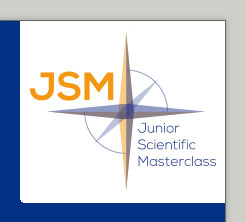Onderzoeksproject aanpassen
Projecten zijn uitsluitend aan te passen door bij het project behorende onderzoekers.
Geef via het uitrolmenu aan welke onderzoeker u bent. Nadat op u de button 'Edit project' heeft geklikt, wordt automatisch een e-mail verstuurd naar het e-mailadres van de onderzoeker die u heeft gespecificeerd.
In deze e-mail staat een link waarmee u het project kunt wijzigen.
Project properties
| Title | Calprotectin as biomarker to diagnose a periprosthetic joint infection, from bench to bedside. |
|---|---|
| Keywords | Calprotectin Periprosthetic joint infection |
| Researchers |
dr. A.C. Muller-Kobold dr. M. Wouthuyzen-Bakker |
| Nature of the research | A combination of fundamental and clinical research. |
| Fields of study | laboratory medicine orthopedics internal medicine |
| Background / introduction |
|---|
| The diagnosis of patients with a periprosthetic joint infection can be a real challenge. This is reflected by the rise in publications on this topic, and the increase in several potential biomarkers to aid in the diagnosis. Calprotectin is a protein that is present in the cytoplasm of neutrophils, is released upon neutrophil activation and exhibits antimicrobial properties. Its value has been established for decades as a (fecal) marker for inflammatory bowel disease. We demonstrated that calprotectin can be measured in synovial fluid as well by using a lateral flow test, and shows great potential in diagnosing and excluding a periprosthetic joint infection. Despite this finding, many questions remain concerning the optimalisation of the test, indications for clinical use, its accuracy compared to other tests to diagnose periprostheti joint infection, and what would be the ideal cut-off levels for different types of joint infections. |
| Research question / problem definition |
|---|
|
Fundamental: • What is the stability of synovial calprotectin; what are the optimal preanalytical conditions, what is the effect of Ca2+ , and the effect of freeze-thaw cycles? • What is the effect of blood contamination on the calprotectin measurement? • Evaluation of synovial calprotectin analysis using calex tubes in combination with the fully automated Roche c-module turbidimetric calprotectin analysis. Clinical: • What is the diagnostic accuracy of two different calprotectin lateral flow assays (Lyfstone versus Buhlmann) in diagnosing PJI? • What is the diagnostic accuracy of synovial calprotectin compared to other routine laboratory and clinical tests for diagnosing PJI? • What are the optimal calprotectin cut-off levels in diagnosing acute and chronic PJIs, and septic arthritis in native joints? Do cut-off levels need to be adapted according to the type of joint (hips, knees). • Is there a difference in the calprotectin level when measured in the laboratory versus bed-side (point of care)? |
| Workplan |
|---|
| This proposal entails several studies on the fundamental as clinical side from which the student can choose. A biobank with synovial fluid is already available with corresponding clinical data. Ideally, a manuscript will be written at the end of the project, and if both the student and the supervisors are satisfied with the result, the student may apply for an MD-PhD project covering all of the research questions as outlined above. |
| References |
|---|
|
1. Chen A, Fei J, Deirmegian C. Diagnosis of periprosthetic infection: novel developments. J Knee Surg. 2014; 27(4):259-65. 2. Kehl-Fie TE, Chitayat S, Hood MI et al. Nutrient metal sequestration by calprotectin inhibits bacterial superoxide defense, enhancing neutrophil killing of Staphylococcus aureus. Cell Host Microbe 2011; 10 (2):158-164. 3. Nakashige TG, Zhang B, Krebs C et al. Human Calprotectin Is an Iron-Sequestering Host-Defense Protein. Nat Chem Biol. 2015; 11(10):765–771. 4. Wouthuyzen-Bakker M, Ploegmakers JJW, Ottink K, Kampinga GA, Wagenmakers-Huizenga, Jutte PC et al. Synovial calprotectin: an inexpensive biomarker to exclude a chronic prosthetic joint infection. J Arthroplasty 2018; 33(4): 1149-53. 5. Wouthuyzen-Bakker M, Ploegmakers JJW, Kampinga GA et al. Synovial calprotectin: a potential biomarker to exclude a prosthetic joint infection. Bone Joint J. 2017;99(5):660-665. |


